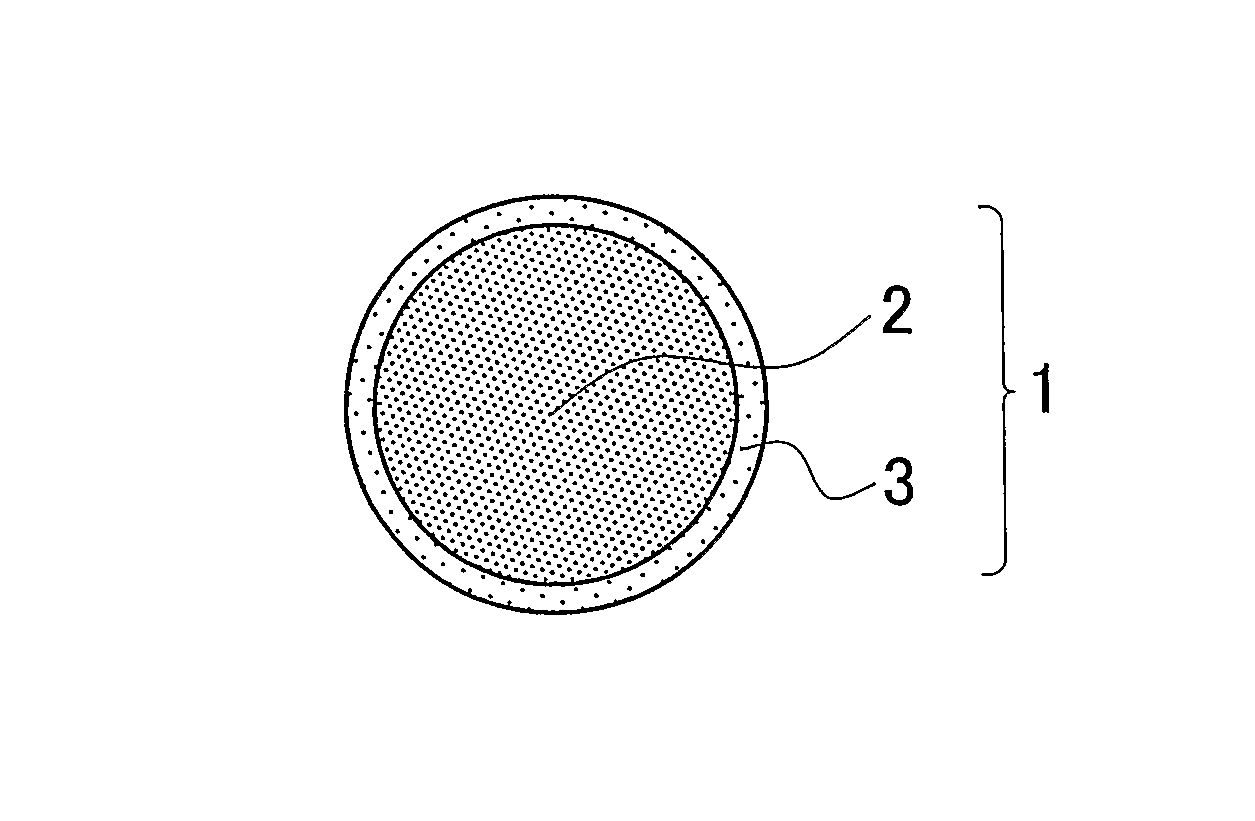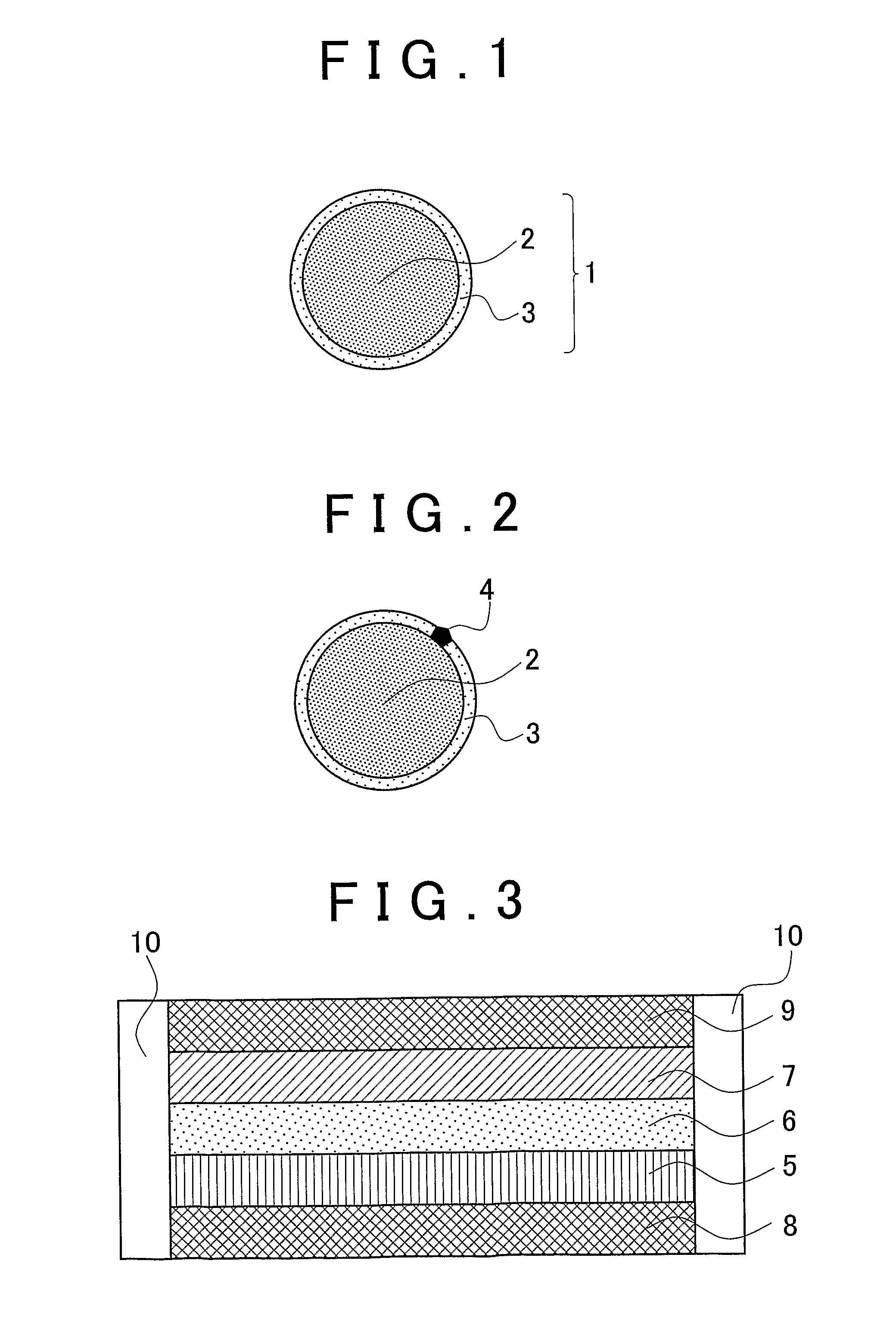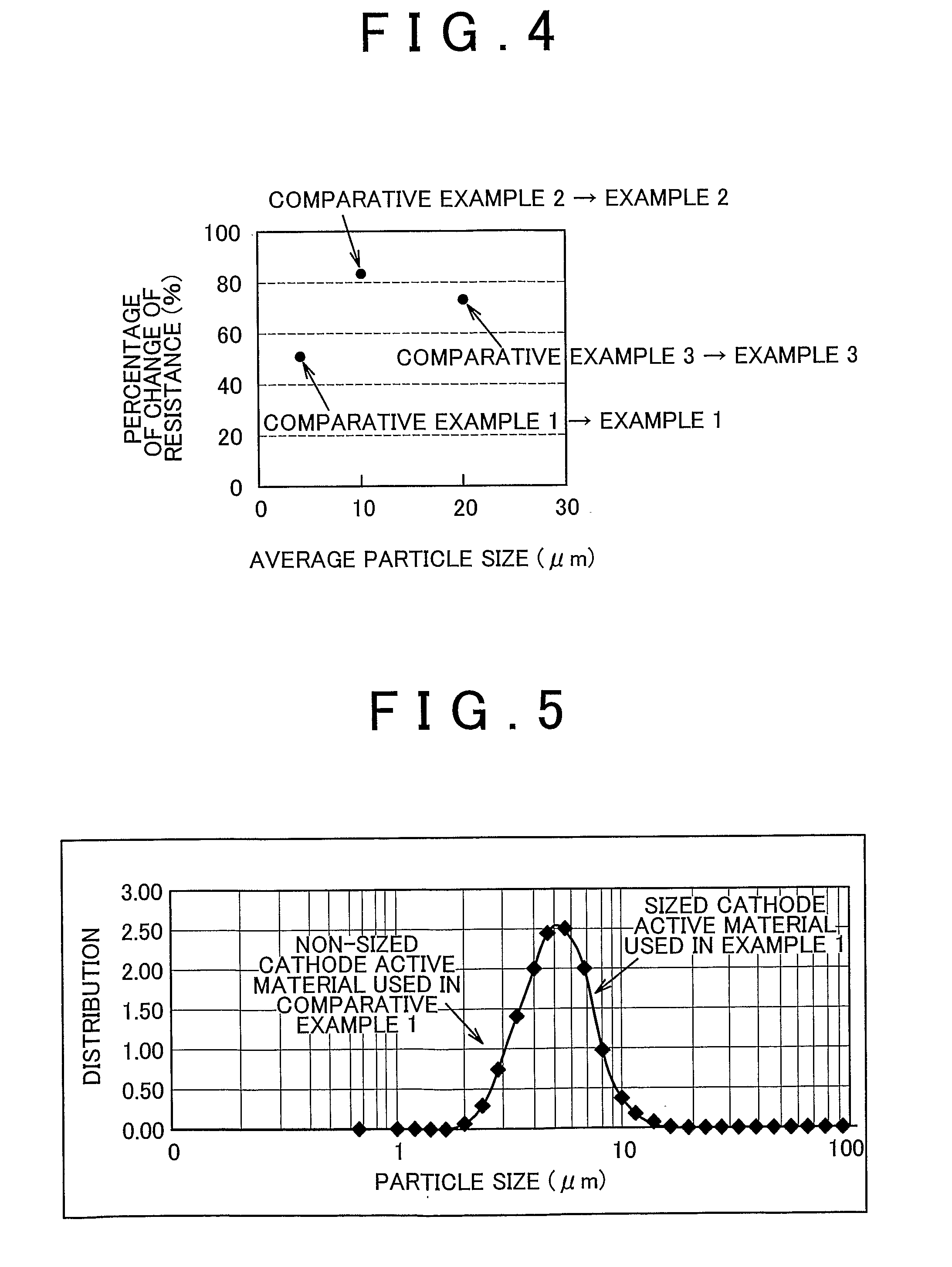Cathode active material coated with resistance-reduction coating layer, and all solid-state lithium secondary battery using the same
a technology of cathode active material and resistance reduction coating layer, which is applied in the direction of non-aqueous electrolyte cells, cell components, electrochemical generators, etc., can solve the problems of reducing the interface between the cathode active material and the electrolyte, increasing the resistance and reducing the output of the resulting battery, and reducing the resistance between the cathode active material and the solid electrolyte material , to achieve the effect of reducing
- Summary
- Abstract
- Description
- Claims
- Application Information
AI Technical Summary
Benefits of technology
Problems solved by technology
Method used
Image
Examples
example 1
[0108]A precursor solution for a resistance-reduction coating layer was prepared by adding and mixing LiCoC2H5 and Nb(OC2H5)5 into ethanol, in a mole ratio of 1:1. Then, the particle size of a cathode active material, LiCoO2, having the average particle size of 4 μm was controlled by air classification, so as to obtain a cathode active material in which the volume percentage of fine particles having a particle size of 1 μm or smaller is 0.04% or lower. The precursor solution for the resistance-reduction coating layer was applied by spray coating using a rotating fluidized bed to a surface of the cathode active material that has been sized, so as to provide the cathode active material coated with the resistance-reduction coating layer. The thickness of the resistance-reduction coating layer was controlled to be equal to 7 nm. In this connection, the thickness of the resistance-reduction coating layer was calculated from the surface area of LiCoO2 and the amount of the sprayed precurs...
example 2
[0109]A battery cell was formed in the same manner as in Example 1, except that a cathode active material LiCoO2 (having the average particle size of 10 μm) was used.
example 3
[0110]A battery cell was formed in the same manner as in Example 1, except that a cathode active material LiCoO2 (having the average particle size of 20 μm) was used.
PUM
| Property | Measurement | Unit |
|---|---|---|
| thickness | aaaaa | aaaaa |
| thickness | aaaaa | aaaaa |
| thickness | aaaaa | aaaaa |
Abstract
Description
Claims
Application Information
 Login to View More
Login to View More - R&D
- Intellectual Property
- Life Sciences
- Materials
- Tech Scout
- Unparalleled Data Quality
- Higher Quality Content
- 60% Fewer Hallucinations
Browse by: Latest US Patents, China's latest patents, Technical Efficacy Thesaurus, Application Domain, Technology Topic, Popular Technical Reports.
© 2025 PatSnap. All rights reserved.Legal|Privacy policy|Modern Slavery Act Transparency Statement|Sitemap|About US| Contact US: help@patsnap.com



